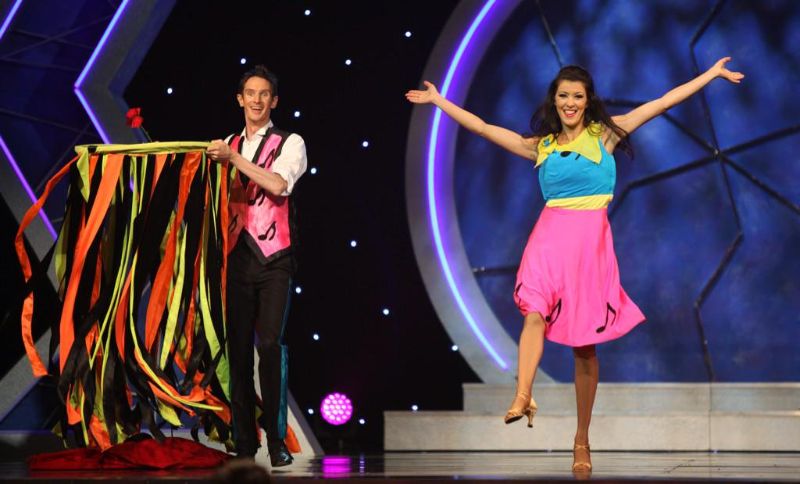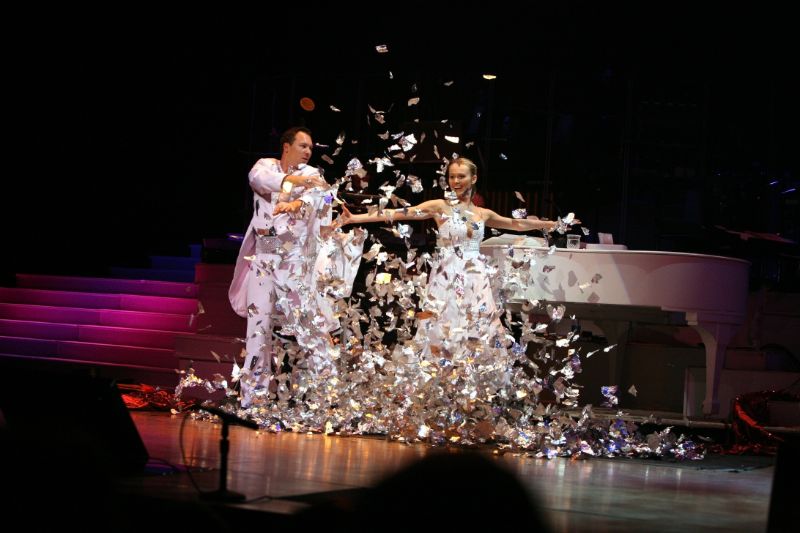Quick change acts, a mesmerizing blend of fashion and illusion, have consistently left audiences in awe with their astonishing transformations. The question that often lingers is, How do quick change acts work?
These acts are like a choreographed dance between magic and costume design, where split-second changes turn ordinary outfits into dazzling attires, right before your eyes. In this exploration, we’ll delve into the fascinating world of quick change acts, uncovering the mechanics behind these rapid wardrobe alterations and the psychology that makes them so captivating.
How Do Quick Change Acts Work
Layering: Performers start by wearing multiple layers of clothing. These layers are designed to come off easily and are secured using snaps, Velcro, or magnets.
Choreography: Precise choreography and timing are crucial. Performers rehearse extensively to ensure they move seamlessly, aligning their actions with the music or routine.
Misdirection: Quick change acts use misdirection to divert the audience’s attention. While one performer is removing a layer, the other is often drawing the audience’s focus away from the change.

Reveal: As a layer is removed, a new outfit is revealed. The layers that come off are typically designed to fall to the floor or be thrown into the air, adding to the visual spectacle.
Matching Outfits: To achieve the illusion, the new outfits must match in style and color. This careful costume design ensures a smooth transition.
Lighting and Stage Effects: Lighting, stage design, and even the angle from which the audience views the performance can be manipulated to hide the changes.
The Mechanics of Quick Changes
Strategic Fastenings: Costume designers use cleverly concealed fastenings such as snaps, magnets, Velcro, and zippers. These fastenings are strategically placed to allow for quick and inconspicuous removal.
Preparation: Performers and dressers practice these quick changes extensively. They memorize the order of removal, the timing, and coordinate their movements to make the process as seamless as possible.
Backstage Team: Quick changes typically require a backstage team. These dressers or assistants work in sync with the performers, quickly removing layers, assisting with new outfits, and ensuring everything runs smoothly.

Rehearsal and Timing: Rehearsals are meticulous. Performers practice their quick changes over and over to perfect the timing and synchronization.
Costume Design: Costume designers play a significant role. They ensure that the new outfit easily matches the style and color of the previous one, facilitating a smooth transition.
Lighting and Stage Design: Lighting and stage effects can also be used to hide the quick change. Dimming lights, strategically placed props, and even the angle from which the audience views the change can all contribute to the illusion.
The Enduring Appeal of Quick Change Acts
Visual Spectacle: Quick change acts are a visual spectacle that captivates audiences. The rapid transformation of costumes right before their eyes creates a sense of wonder and astonishment.
Entertainment Value: Quick change acts are highly entertaining. They add excitement and suspense to performances, keeping the audience engaged and eager to see the next transformation.
Versatility: Quick change acts can be incorporated into various types of performances, from magic shows and variety acts to fashion shows and theater productions. Their versatility allows them to adapt to different genres.
Surprise Element: The surprise element is a major draw. Even when audiences know they’re about to witness a quick change, they are still amazed by the magic-like quality of the act.
Universal Appeal: Quick change acts have a universal appeal. Regardless of language or cultural barriers, the visual impact of a rapid costume change resonates with audiences worldwide.
Nostalgia: For many, quick change acts evoke feelings of nostalgia. They have been a part of entertainment history for decades and continue to be passed down through generations.
Audience Engagement: The interaction between performers and the audience during quick changes adds to the appeal. The shared experience of witnessing the magic unfold strengthens the connection.
Conclusion
As you can see, learning how to do a quick change act is no small feat–it takes hours of practice and dedication in order to perfect the craft. However, once you’ve reached a certain level of proficiency with the trick, it can open up tons of new possibilities for your show. Additionally, creating the costume elements ahead of time will make sure that each part of the performance runs like clockwork. With its potential to make an audience gasp in amazement, a successful quick change act can bring your entire show to life in an unforgettable way.
